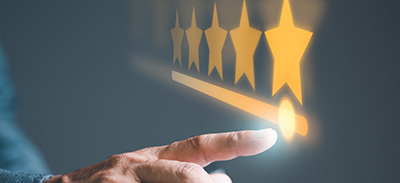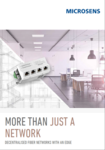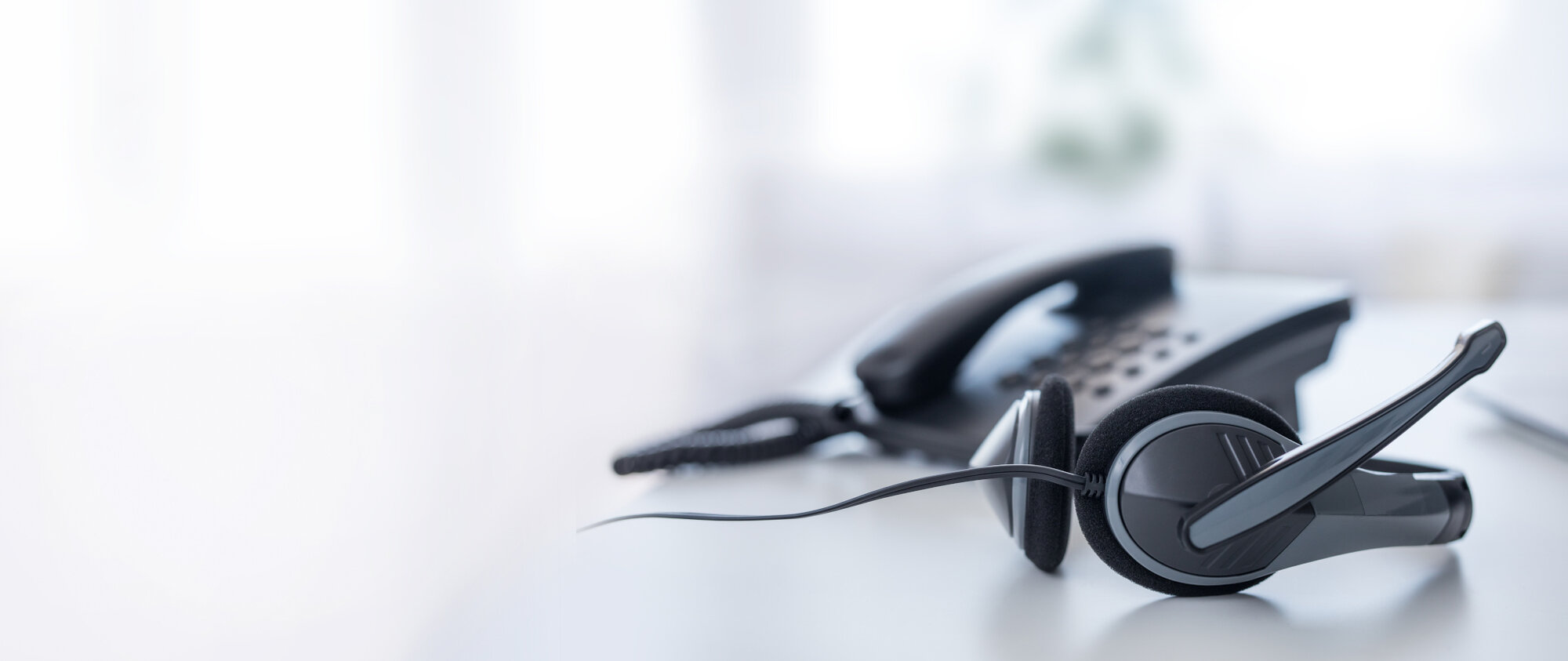The energy saving potential with building automation is up to 40% for heating systems, 40% for building management, 50% for air conditioning and even up to 80% for lighting.
In addition to higher CO2 savings, building automation solutions also offer users considerable advantages in terms of ease of operation and energy efficiency. Measurement and control processes in the building are coordinated and recorded centrally. Lighting, heating, air conditioning, solar shading, access control and other security systems are coordinated to meet specific needs.
Smart Building Solutions - Secure building automation at room level
With increasing automation, system safety is of particular importance. In contrast to conventional bus-based concepts, MICROSENS systems do not require a separate infrastructure. They use the existing local data network. This ensures not only maximum comfort and productivity, but also more security.
In IP-based building automation, intelligent network switches communicate as decentralized control instances with the individual actuators and sensors - via existing IT data cables. All processes here are software-controlled and standardized, whether for heating, air conditioning, public address, lighting, access and usage rights or other functions. This means that missing compatibility or time-consuming and costly reprogramming and reprogramming of bus systems are a thing of the past.
An entire building can be integrated into the automation solution room by room without additional cabling. This enables a smooth migration into a modern building management system. This not only saves costs, but also facilitates installation in existing buildings and during ongoing operation, so that restrictions at the workplace are much less than with the time-consuming laying of cables.
Maximum compatibility, minimum installation effort
At MICROSENS building automation is an open system: Intelligent network switches from MICROSENS also integrate existing plants and systems into an IP-based environment. Special automation gateways integrate even devices without a direct IP connection - such as light switches, sensors, heating valves, air conditioning units and blind control - into the MICROSENS system.
Open, scalable and safe - building automation with MICROSENS
The applications are scalable and expandable. Existing rooms can be integrated step-by-step as required. For each individual room unit, planners can define individual scenarios and adapt the automation system to the current requirements of building use. Central administration is possible with Smart Building Solutions, but is not required under any circumstances.
Communication between sensors, actuators and coordinating system management takes place via encrypted IP network protocols. Security measures are already integrated in the IP standard. It provides end-to-end encryption, authorization and authentication. Data and building technology are protected against unwanted access: Only authenticated users and end devices can access the automation system thanks to user rights assignment. The use of manipulated IP devices is impossible. The gates for malware and hacker attacks are consistently closed.
With Power-over-Ethernet, the existing IP infrastructure is used both for controlling the devices and for their power supply. This means that lighting with energy-efficient LED luminaires can also be fully integrated into the overall concept.
Components for a new generation of building automation
Several MICROSENS components interact intelligently in IP-based building automation:
Micro Switch
Micro switches enable the integration of end devices such as computers, IP telephones, printers or WLAN access points into the network. They are powerful control centers whose high computing power allows them to take over additional far-reaching functions of building automation. An example of this is the control and management of all technical office equipment such as lighting, blinds, heating, air conditioning, network access for IT devices and telephones as well as security technology devices.
Smart I/O Controller
The Smart I/O Controller integrates each device directly at sensor-actuator level into the IP infrastructure of modern buildings. In this way, even older field devices in the IP network can be addressed directly with modern control options.
Even analog devices can be controlled directly in the system via Ethernet. With this product, MICROSENS enables a simple, fully IP-networked building automation solution without interface problems: Thanks to power supply via Power-over-Ethernet (PoE+), the integration of control bus and additional power cables is no longer necessary.
Smart Director
The Smart Director, a special application (microApp) that is installed directly on the network switches in the rooms, controls the cooperation of sensors, actuators and users. The Smart Director evaluates environmental parameters recorded with Smart Sensors (see below) and sends corresponding commands to responsible controller units and actuators via the IP network. The Smart Director is also an additional safety barrier.
Smart Engine
The Smart Engine supplies the connected luminaires with power via Power-over-Ethernet Plus. For this purpose, it uses data lines similar to those used for the IT infrastructure. The device can be housed in a DV cabinet or electrical distributor, but can also be installed directly in a decentralised location, e.g. in a suspended ceiling. The number of engines required depends on the extent and extension of the lighting system.
Smart Lighting Controller
The controller is the link between LED luminaires and the IP network: it integrates the Smart Sensor, controls the LED luminaires and ensures the appropriate power supply via the data network with Power-over-Ethernet. What's special: Standard network cables simultaneously supply power and information for energy-saving, dimmable LED lighting. In contrast to other networked lighting solutions, no time-consuming and costly installation of bus systems is required.
Central Smart Lighting Controller
The Central Smart Lighting Controller serves as a multiport constant current source for up to 24 individually controllable LED lights. Standardised twisted-pair cables provide up to 50 W of power per luminaire. The device ensures uniform light generation and flicker-free dimming of the connected luminaires. Motion or presence detectors can be connected via four wired bus inputs. It is also possible to integrate light switches and other sensors or actuators into the system by radio. The EnOcean radio standard is currently supported.
Smart Sensor
Smart sensors record environmental parameters such as brightness, temperature and the presence of people in the room.
By using sensors and actuators, building automation is always used precisely where it is needed. For example, even economical LED luminaires can work much more efficiently if they really only light up at the time and intensity they are needed. Exactly when a person is in the room, exclusively where natural outside light is not sufficient, and exactly in the quantity required for pleasant vision.











